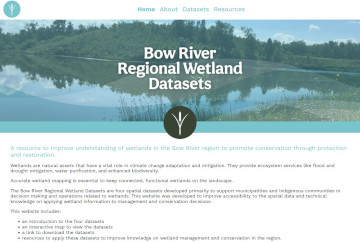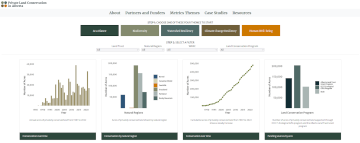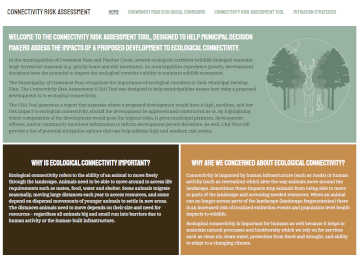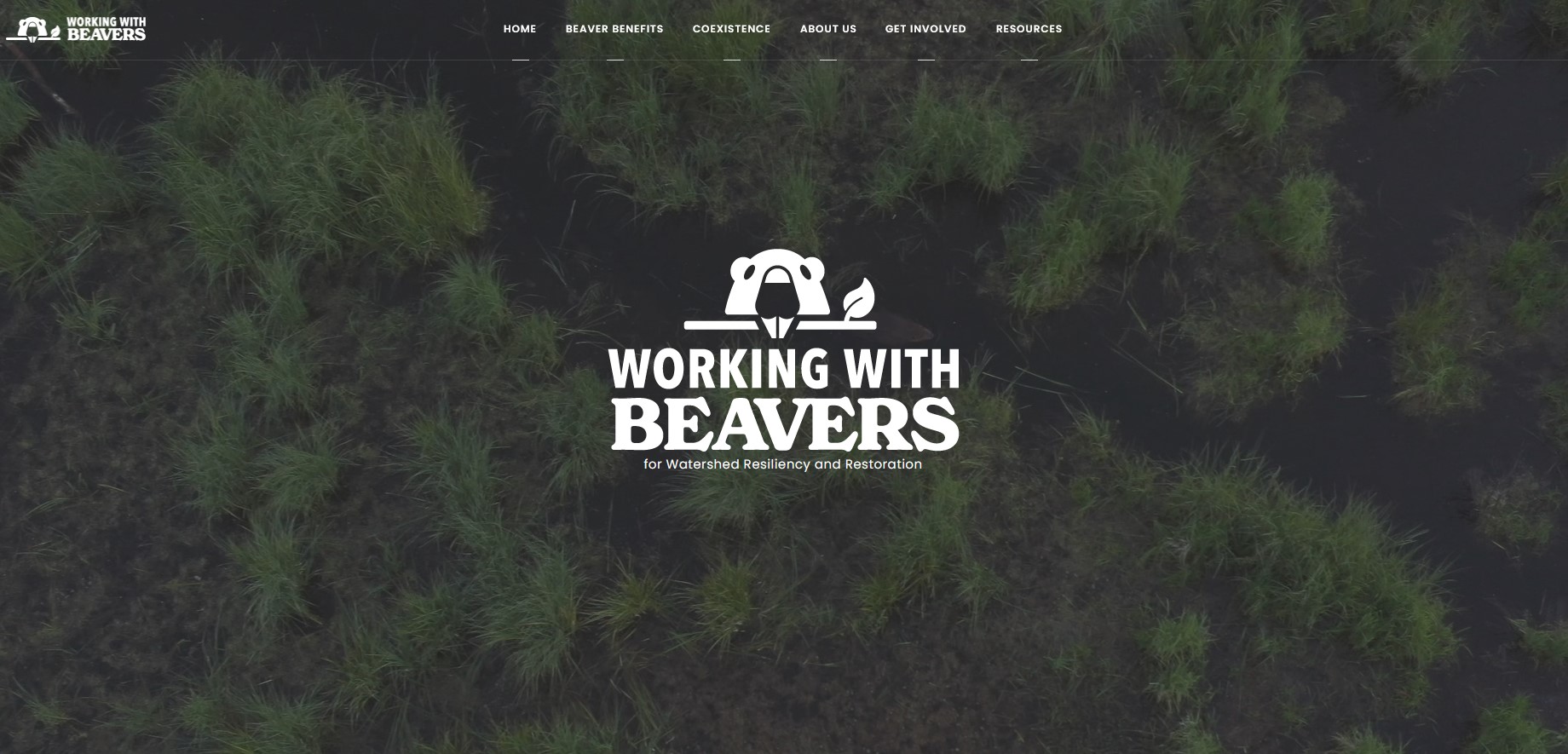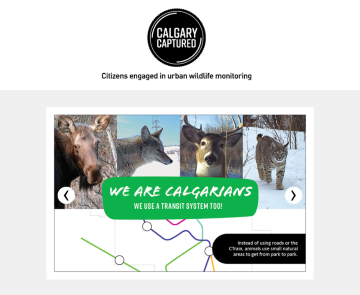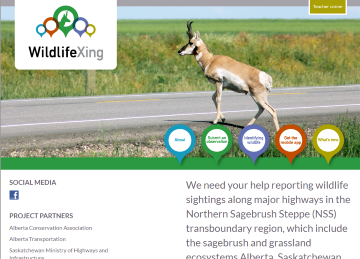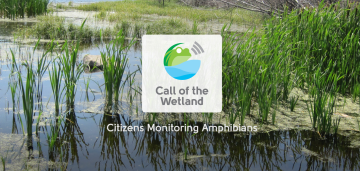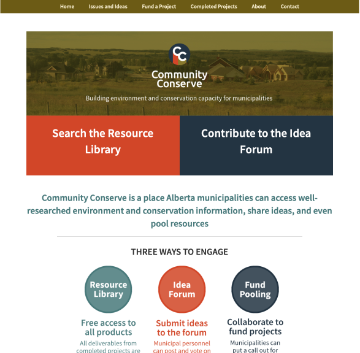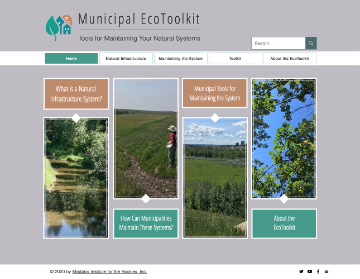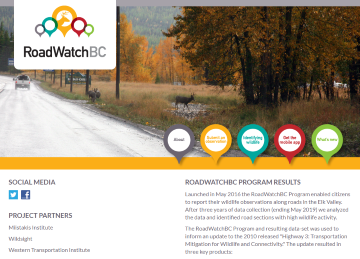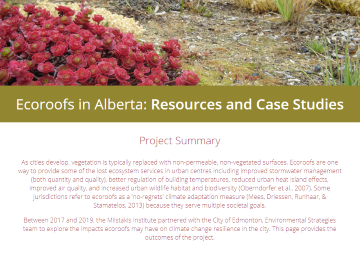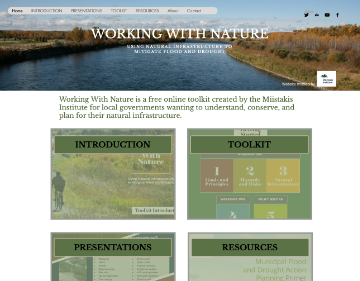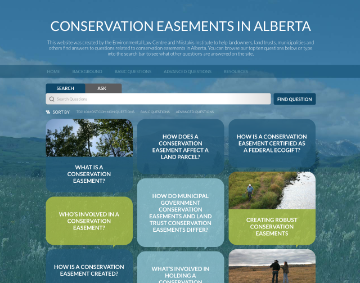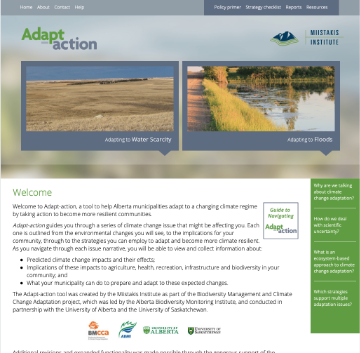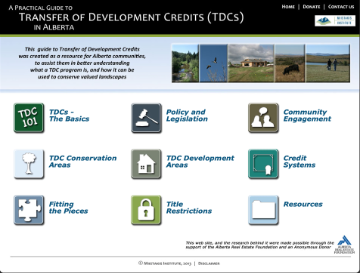Our Work
Project Websites
The Miistakis Institute focuses its work across three key research areas, often creating stand-alone websites dedicated to specific projects. Below, you’ll find brief descriptions and links to explore these initiatives further.
Bow River Regional Wetland Datasets
Wetlands are natural assets that have a vital role in climate change adaptation and mitigation. They provide ecosystem services like flood and drought mitigation, water purification, and enhanced biodiversity. Accurate wetland mapping is essential to keep connected, functional wetlands on the landscape. The Bow River Regional Wetland Datasets are four spatial datasets developed primarily to support municipalities and Indigenous communities in decision making and operations related to wetlands. This website was developed to improve accessibility to the spatial data and technical knowledge on applying wetland information to management and conservation decisions.
Private Land Conservation in Alberta
Private land conservation (PLC) is an important strategy for conservation in Alberta with PLC making significant contributions to wetland protection, climate resiliency and biodiversity protection. To highlight the value of land trusts and private land conservation in Alberta the Miistakis Institute developed this website to provide an in-depth look at PLC contributions through a diverse set of metrics.
Wildlife Movement Tool
The Wildlife Movement Tool helps municipal decision makers assess the impacts of a proposed development to ecological connectivity. The Wildlife Movement Tool generates a report that assesses where a proposed development would have a high, medium, and low risk impact to ecological connectivity. By highlighting which components of the development would pose the highest risks, it gives municipal planners, development officers, and/or community members information to inform development permit decisions. The Tool also will provide a list of potential mitigation strategies to reduce risk to ecological connectivity.
Working with Beavers for Watershed Resiliency and Restoration
It is increasingly recognized that nature-based solutions play an important role in watershed resiliency and restoration. One such nature-based solution is promoting beavers as beavers help attenuate flood peaks, store water during droughts, support later season release of flows and dramatically improve water quality and quantity by slowing water and trapping sediment. Beavers help stabilize the landscape against the increased variability of drought and flood conditions. They can also create critical habitat for both wildlife and fish populations. Our project works with landowners, municipalities, industry, government agencies and non-governmental organizations to enhance coexistence of beavers through education and extension, engaging citizens in beaver data collection, tool development, hands-on training and monitoring and the development of coexistence solutions and problem mitigation.
Calgary Captured
Calgary Captured is a collaborative citizen science project that uses motion triggered camera traps to capture photos of wildlife in Calgary. Our goal is to monitor and assess the biodiversity in urban parks through citizen identified images of wildlife to gain a better understanding of wildlife occurrence in City of Calgary Parks, engage Calgarians in wildlife monitoring and to gain insight into how wildlife are moving around the urban environment.
WildlifeXing
Wildlife Xing is a citizen science program developed to ground truth seasonal migratory pinch-points identified by connectivity modeling across highways in the Northern Sagebrush Steppe and increase public engagement in pronghorn science and conservation. Information on wildlife sightings collected by the public will enable us to better understand where pronghorn and other wildlife are commonly crossing, involved in collisions, or moving adjacent to the highway. Ultimately this will lead to development of informed strategies to reduce wildlife vehicle collisions while ensuring the safe passage of wildlife across highways.
Call of the Wetland
To better understand the health of Calgary's wetlands, Miistakis Institute, Enbridge, Parks Foundation Calgary, Alberta Conservation Association and the Calgary Zoo developed "Call of the Wetland", a citizen science program that enabled the public to monitor amphibians as an important indicator of wetland health. Call of the Wetland engaged Calgarians in understanding the health of wetlands through monitoring of amphibians and enabling a connection to nature in the City. The long-term outcome of Call of the Wetland is to build off of the knowledge gained on amphibian presence to understand the health of wetlands within the City of Calgary, as well as to continue to foster a community of knowledgeable citizens to champion wetland protection and restoration.
Community Conserve
Community Conserve is a both a free resource for environment and conservation information for municipalities, as well as a forum for municipal voices on these topics. It was created in collaboration with the Environmental Law Centre in Edmonton, and with the support of the Alberta Urban Municipalities Association and Rural Municipalities Alberta.
Municipal EcoToolkit
The Municipal EcoToolkit is a collection of approximately 50 tools for Alberta municipalities seeking to maintain their natural infrastructure systems. Tools are gathered under the headings of Protection, Planning, Practices, Perceptions, and Persuasion.
Grizztracker
Grizztracker is a program co-created by industrial stakeholders, Alberta Environment and Parks, Alberta Conservation Association and the Miistakis Institute to facilitate the collection of grizzly bear observations. GrizzTracker includes the development of a smartphone app and associated on-line mapping tool to increase efficiency, accuracy, and ease of data collection, and ultimately generate a dataset to be used to inform grizzly bear management.
Roadwatch BC
Roadwatch BC was a three-year citizen science program spanning from 2016-2019, that allowed citizens to track wildlife observations along roads in Elk Valley, BC. These observations were used to identify where the majority of wildlife and vehicle interactions occur along the highway. This data was then used to identify areas recommended for mitigation measures along Highway 3 to improve wildlife and human safety.
EcoRoofs
This is a project that explored the impacts of rooftop vegetation in urban environments on climate resiliency. As cities grow, more green space is developed into buildings. The absence of vegetation in cities can create issues such as heat-islands, poor air quality, and a lack of biodiversity. Ecoroofs can help mitigate these effects by reintroducing vegetation into the urban space. This website provides resources related to ecoroofs and a directory of ecoroofs located in Edmonton, Alberta.
Working With Nature
The Working With Nature toolkit is a free, online resource created to help municipalities catalogue their natural infrastructure, and then develop a prioritized plan for better using it to mitigate flood and drought risk. It provides the materials and directions for a municipality to self-navigate through workshops, worksheets, and ultimately a living Workbook.
Conservation Easements in Alberta
Conservation Easements in Alberta a resource kit for landowners, land trusts, and/or municipalities who want to better understand the conservation easement tool. It uses a Q&A format to provide basic and advanced information, and includes includes templates and guides.
Adapt-action
Adapt-action is a guide for municipalities to understand climate change issues, linking the environmental changes they see, to the implications for their communities, through to the strategies they can employ to adapt and become more climate resilient.
Practical Guide to Transfer of Development Credits in Alberta
Transfer of Development Credits (TDCs) is a market-based tool that helps reconcile increased development with conservation of sensitive lands. This online guide is for municipalities wanting to know what the TDC tool is, and how to integrate it into their existing planning structures.
